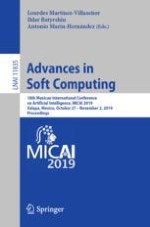2019 | Book
Advances in Soft Computing
18th Mexican International Conference on Artificial Intelligence, MICAI 2019, Xalapa, Mexico, October 27 – November 2, 2019, Proceedings
Editors: Dr. Lourdes Martínez-Villaseñor, Dr. Ildar Batyrshin, Antonio Marín-Hernández
Publisher: Springer International Publishing
Book Series : Lecture Notes in Computer Science
